5005 aluminum alloy is a widely used non-heat-treatable alloy known for its excellent corrosion resistance, moderate strength, and good formability. Belonging to the 5xxx series, which is alloyed primarily with magnesium, 5005 aluminum is commonly utilized in sheet and plate forms for various industrial and commercial applications. This article explores the key properties, typical applications, and advantages of 5005 aluminum alloy plates.
Composition and Properties
The chemical composition of 5005 aluminum alloy typically includes:
Aluminum (Al): ~97.5% (base metal)
Magnesium (Mg): 0.5–1.1% (primary alloying element)
Other elements (Mn, Si, Fe, Cu, Zn, Cr): Trace amounts
Key Properties:
Corrosion Resistance – 5005 aluminum exhibits excellent resistance to atmospheric and marine environments, making it ideal for outdoor and coastal applications.
Moderate Strength – While not as strong as heat-treatable alloys like 6061, 5005 offers sufficient strength for many structural and decorative uses.
Formability and Weldability – It can be easily formed, bent, and welded, making it suitable for fabrication processes.
Anodizing Potential – 5005 aluminum responds well to anodizing, enhancing its aesthetic appeal and surface durability.
Lightweight – Like all aluminum alloys, 5005 is lightweight (~2.7 g/cm³), contributing to fuel efficiency in transportation applications.
Applications of 5005 Aluminum Plates
Due to its balanced properties, 5005 aluminum plates are used in various industries, including:
Architecture & Construction: Roofing, wall panels, and decorative trims due to its corrosion resistance and anodizing capability.
Transportation: Interior panels, truck bodies, and marine components.
Consumer Goods: Appliance panels, signage, and kitchenware.
Electrical Industry: Conductive components and enclosures.
Advantages Over Other Aluminum Alloys
Better Corrosion Resistance than 3xxx Series – Superior to 3003 aluminum in harsh environments.
More Cost-Effective than 6xxx Series – While 6061 offers higher strength, 5005 is more economical for non-structural applications.
Easier to Fabricate than 7xxx Series – Unlike high-strength 7xxx alloys, 5005 is more formable and weldable.
Conclusion
5005 aluminum alloy plates provide an optimal balance of corrosion resistance, formability, and cost-effectiveness, making them a preferred choice for architectural, transportation, and consumer applications. Their versatility and durability ensure continued demand across multiple industries.
For projects requiring a lightweight, corrosion-resistant, and easily fabricated material, 5005 aluminum plates are an excellent solution.


